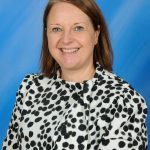The study of mathematics in Milford Haven School is broadly split into four key areas:
Numbers are the symbol system for describing and comparing quantities. This will be the first abstract concept that learners meet in mathematics, and it helps to establish the principles of logical reasoning. In mathematics the number system provides learners with a basis for algebraic, statistical, probabilistic and geometrical reasoning, as well as for financial calculation and decision-making.
Knowledge of, and competence in, number and quantities are fundamental to learners’ confident participation in the world, and provide a foundation for further study and for employment. Computational fluency is essential for problem-solving and progressing in all areas of learning and experience. Fluency is developed through using the four basic arithmetic operations and acquiring an understanding of the relationship between them. This leads to preparing the way for using algebraic symbolisation successfully.
Algebra is the study of structures abstracted from computations and relations, and provides a way to make generalisations. Algebraic thinking moves away from context to structure and relationships. This powerful approach provides learners with the means to abstract important features and to detect and express mathematical structures of situations in order to solve problems. Algebra is a unifying thread running through the fabric of mathematics.
Algebraic thinking is essential for reasoning, modelling and solving problems in mathematics and in a wide range of real-world contexts, including technology and finance. Making connections between arithmetic and algebra develops skills for abstract reasoning from an early age.
Geometry involves playing with, manipulating, comparing, naming and classifying shapes and structures. The study of geometry encourages the development and use of conjecture, deductive reasoning and proof. Measurement allows the magnitude of spatial and abstract features to be quantified, using a variety of standard and non-standard units. It can also support the development of numerical reasoning.
Reasoning about the sizes and properties of shapes and their surrounding spaces helps learners to make sense of the physical world and the world of mathematical shapes. Geometry and measurement have applications in many fields, including art, construction, science and technology, engineering, and astronomy.
Statistics is the practice of collecting, manipulating and analysing data, allowing representation and generalisation of information. Probability is the mathematical study of chance, enabling predictions of the likelihood of events occurring. Statistics and probability rely on the application and manipulation of number and algebra.
Managing data and representing information effectively provide learners with the means to test hypotheses, draw conclusions and make predictions. The process of reasoning with statistics and probability, and evaluating their reliability, develops critical thinking and analytical skills that are fundamental to enabling learners to make ethical and informed decisions.
For Mathematics & Numeracy, in years 7 & 8, targeted schemes of learning have been developed by the AOLE that best support the learning journey for the pupils at Milford Haven School, which underpins of the all strands and elements included in the National Numeracy Framework. Pupils are measured against the Progression steps as mapped in the Curriculum for Wales.
Learners are encouraged to develop their mathematical reasoning and thinking skills through rich tasks and real-life contextual problems. Over the course of the year, learners will be given the opportunity to participate in a number of nationally recognised Mathematical challenges, including the United Kingdom Mathematics Trust Challenge. Twice during the year learners will sit the National Numeracy Tests.
Equipment Checklist
For Mathematics & Numeracy, Years 9, 10 and 11 follow the WJEC GCSE Specification for Mathematics and Numeracy. Through this programme of study, the learners are able to adapt the skills learnt to solve “real-life” problems and improve their understanding of more technical mathematical study.
All Pupils will sit GCSE Mathematics, GCSE Numeracy and high achieving learners may be invited to sit additional mathematical courses.
Pupils will sit GCSE Mathematics at one of three tiers of entry
Higher Tier: Grades A* – C
Intermediate Tier: Grades B – E
Foundation Tier: Grades D – G
All tiers are made up of two papers, Unit 1 – non calculator and Unit 2 – calculator.
Pupils will also sit GCSE Numeracy at one of three tiers of entry
Higher Tier: Grades A* – C
Intermediate Tier: Grades B – E
Foundation Tier: Grades D – G
All tiers are made up of two papers, Unit 1 – non calculator and Unit 2 – calculator.
The Maths & Numeracy offer the Level 2 qualification in Additional Mathematics, as an option subject or by completing this independently around lessons, with teacher support during break times.

Mrs E Kedward
Director of Maths Numeracy
Mr S McCarthy
Deputy Director

Mr A Dickinson
Teacher

Mr T Carew
Teacher
Mr D Hart
Mrs V Griffiths
Mrs A Kelso

Mrs K Stacey
Teacher

Mrs A Sanderson
Maths & Numeracy TA